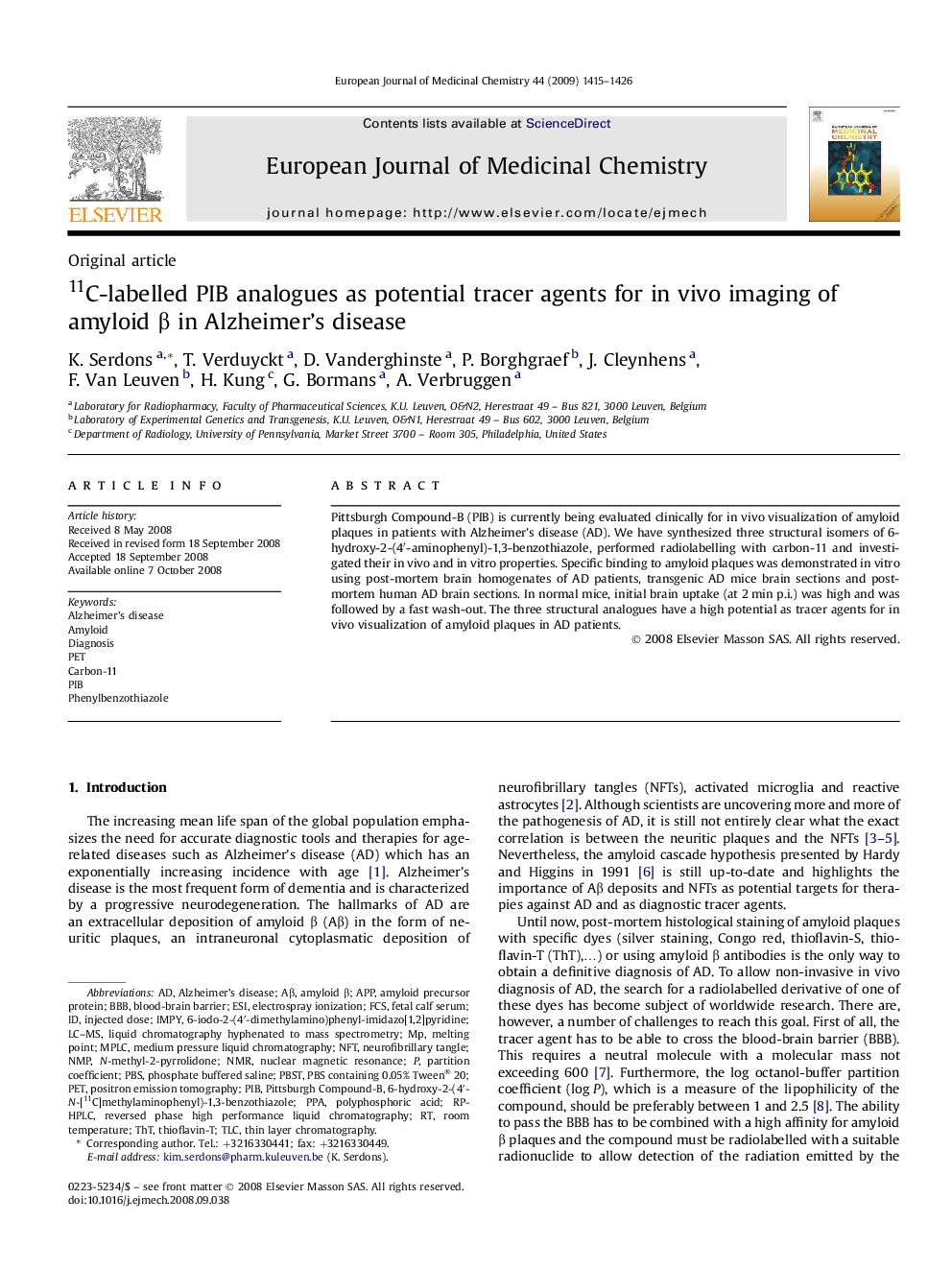| Article ID | Journal | Published Year | Pages | File Type |
|---|---|---|---|---|
| 1395168 | European Journal of Medicinal Chemistry | 2009 | 12 Pages |
Pittsburgh Compound-B (PIB) is currently being evaluated clinically for in vivo visualization of amyloid plaques in patients with Alzheimer's disease (AD). We have synthesized three structural isomers of 6-hydroxy-2-(4′-aminophenyl)-1,3-benzothiazole, performed radiolabelling with carbon-11 and investigated their in vivo and in vitro properties. Specific binding to amyloid plaques was demonstrated in vitro using post-mortem brain homogenates of AD patients, transgenic AD mice brain sections and post-mortem human AD brain sections. In normal mice, initial brain uptake (at 2 min p.i.) was high and was followed by a fast wash-out. The three structural analogues have a high potential as tracer agents for in vivo visualization of amyloid plaques in AD patients.
Graphical abstractThree carbon-11 labelled structure analogues were developed and evaluated as potential tracer agents for in vivo diagnosis of amyloid β in Alzheimer's disease.Figure optionsDownload full-size imageDownload as PowerPoint slide
